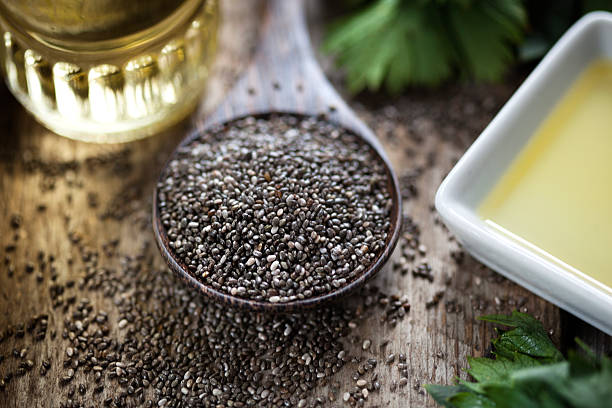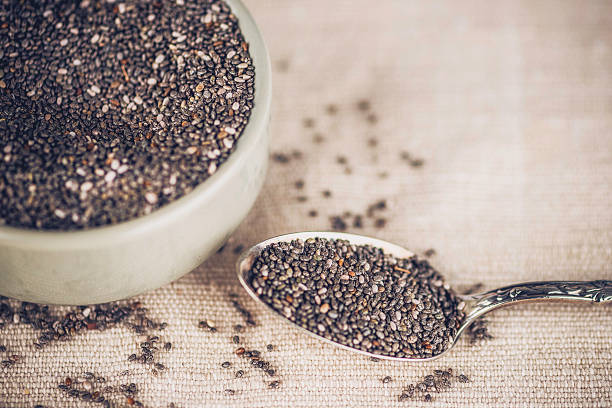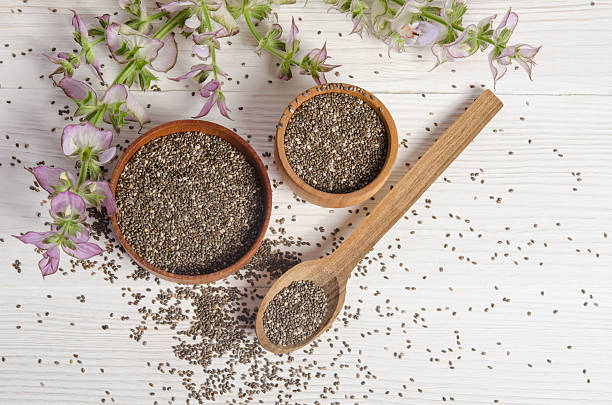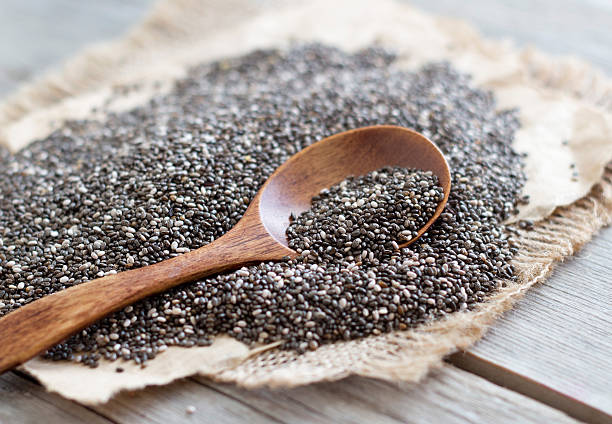Managing blood sugar levels doesn’t have to be hard. In fact, making small, healthy changes to your daily diet can lead to big results. One easy way to start is by adding chia seeds to your meals. These tiny seeds are more than just a trendy smoothie boost—they’re full of fiber, protein, and healthy fats. They have also been shown to help slow down how fast sugar enters your bloodstream, which may help lower blood sugar levels over time. Adding them to your routine could be a simple step toward better health.
In this blog post, we’ll take a closer look at how chia seeds can help support healthy blood sugar levels. We’ll break down the science behind these tiny seeds, explain how they work in your body, and share simple ways to add them to your daily meals. Whether you’re managing diabetes or just trying to avoid blood sugar spikes, this guide is for you. Keep reading to learn how they can be a smart and easy part of your health routine.

What Are Chia Seeds?
Chia seeds come from the Salvia hispanica plant, which belongs to the mint family. These tiny seeds were first grown in Mexico and Guatemala, where they were a key part of ancient Aztec and Mayan diets. People valued them for their energy-boosting powers and health benefits. Today, they are known as a superfood because they are loaded with nutrients like fiber, protein, omega-3 fatty acids, and antioxidants. This makes them a smart choice for anyone looking to support overall health, including blood sugar control.
These tiny seeds are:
- High in fiber
- Rich in omega-3 fatty acids
- Packed with protein
- Full of antioxidants
- Loaded with calcium, magnesium, and phosphorus
They offer more than just great nutrition. What really makes them stand out is their potential to help manage blood sugar levels. Their high fiber content slows down digestion, which can prevent sudden spikes in blood sugar. This makes it a smart choice for people with diabetes or anyone looking to keep their energy steady throughout the day.
How Chia Seeds Help Reduce Blood Sugar Levels
1. High Fiber Content Slows Sugar Absorption
One of the biggest health benefits of chia seeds is their high fiber content. Just two tablespoons of chia seeds provide around 10 grams of fiber, which is more than one-third of the daily recommended amount for adults. This fiber helps slow digestion, keeps you feeling full longer, and supports healthy blood sugar levels. Adding it to your meals is an easy way to boost your fiber intake and improve overall health.
Fiber helps slow down the digestion process, which offers several key benefits:
- Sugar enters your bloodstream more slowly, leading to better blood sugar control
- You avoid sudden spikes and crashes in blood sugar levels
- You stay full longer, which can help reduce cravings and the risk of overeating
This makes fiber-rich foods like it is a smart choice for steady energy and better overall health.
2. Gel-Forming Ability Supports Blood Sugar Stability
When theys are mixed with water, they form a thick, gel-like substance. This gel slows the movement of food through your digestive system. Because of this, your body breaks down carbohydrates more slowly, which can lead to:
- Improved insulin sensitivity
- Lower spikes in blood sugar after meals
- More stable blood sugar levels throughout the day
This slow-digesting effect makes chia seeds a helpful tool for managing blood sugar naturally.
3. Plant-Based Omega-3s and Antioxidants
Chia seeds are one of the top plant-based sources of omega-3 fatty acids, which help reduce inflammation in the body. Inflammation can make it harder for insulin to work properly, so lowering inflammation may support better blood sugar control.
In addition to omega-3s, they are rich in antioxidants. These antioxidants help protect your cells from oxidative stress, a type of damage that often affects people with diabetes. Together, these nutrients makes it a powerful food for supporting overall health and managing blood sugar.

Scientific Studies on Chia Seeds and Blood Sugar
There’s real science behind the hype.
- A study published in the Diabetes Care journal found that people with type 2 diabetes who added chia seeds to their diet experienced improved blood pressure and reduced inflammation markers (source).
- Another study in The British Journal of Nutrition showed that consuming them can significantly lower post-meal blood sugar levels, especially when included with bread or carbohydrate-heavy meals.
These results support the idea that chia seeds are a natural and effective way to support blood sugar management.
Best Ways to Eat Chia Seeds for Blood Sugar Control
Adding chia seeds to your diet is easy and tasty. Their mild, nutty flavor blends well with many different foods. Here are some simple and delicious ways to enjoy it every day:
Chia Seed Recipes to Try
- Chia Pudding: Mix 3 tablespoons of chia seeds with 1 cup of unsweetened almond milk. Let it sit overnight. Add berries or a few drops of vanilla for extra flavor.
- Smoothies: Add 1–2 tablespoons of chia seeds to your morning smoothie. They’ll thicken it up and add fiber.
- Oatmeal Boost: Stir chia seeds into your oatmeal to improve texture and nutrition.
- Baked Goods: Use chia seeds in muffins, pancakes, or energy bars for a healthy twist.
- Salad Topper: Sprinkle chia seeds on your salad for a satisfying crunch.
Tips for Eating Chia Seeds
- Soak before eating: This helps release their gel-like coating, which aids digestion.
- Drink water: Chia seeds absorb up to 10x their weight in water, so staying hydrated is key.
- Start small: If you’re new to fiber-rich foods, begin with a small amount and increase gradually.
How Much Chia Should You Eat Daily?
For most people, starting with 1 to 2 tablespoons of chia seeds each day is a great choice. This amount gives you:
- 8 to 10 grams of fiber
- Healthy omega-3 fatty acids
- Important antioxidants and minerals
Because they are high in fiber, adding too much too quickly may cause bloating or gas. To avoid discomfort, it’s best to introduce them gradually into your diet and drink plenty of water throughout the day. This way, your body can adjust smoothly and you can enjoy the benefits without any issues.
Who Should Be Cautious with Chia Seeds?
While they are safe for most people, a few groups should take extra care:
- People on blood pressure or blood thinning medications: They may interact with these drugs.
- Those with swallowing difficulties: Dry chia seeds can expand quickly and pose a choking hazard.
- Anyone with allergies: Rarely, people may be allergic to chia seeds. Start with a small amount if you’ve never had them before.
As always, if you have any health conditions or concerns, talk to your doctor or a registered dietitian before making big changes to your diet.
Other Health Benefits of Chia Seeds
Besides helping lower blood sugar, chia seeds provide many other health benefits:
- Weight loss support: The fiber in it helps you feel full longer, which can reduce overeating.
- Heart health: Omega-3 fatty acids found in chia seeds help lower bad cholesterol and support a healthy heart.
- Bone health: They are packed with calcium, magnesium, and phosphorus, all important for strong bones.
- Digestive support: Their fiber helps keep your digestive system regular and feeds the good bacteria in your gut.
Adding chia seeds to your diet is a simple way to boost your overall health.

Why Chia Seeds Are a Smart Choice for People with Diabetes
Let’s recap the key reasons why chia seeds are great for blood sugar control:
✅ High in soluble fiber that slows sugar absorption
✅ Form a gel that reduces blood sugar spikes
✅ Rich in anti-inflammatory omega-3s
✅ Easy to add to any diet
✅ Backed by real scientific studies
When combined with other healthy habits like regular exercise, stress reduction, and whole-food eating, they can be part of a powerful strategy to manage diabetes naturally.
Start Today: Small Seeds, Big Impact
If you’re looking for a simple, natural way to support healthy blood sugar levels, chia seeds are worth trying. They’re affordable, shelf-stable, and incredibly versatile.
Here’s how you can start:
- Buy organic, whole chia seeds (white or black—both are fine)
- Soak them in water, plant-based milk, or yogurt
- Use them in smoothies, oatmeal, or healthy baked goods
- Track your blood sugar to see how your body responds
Final Thoughts: Have You Tried Chia Seeds?
Chia seeds may be small, but they pack a powerful punch. Adding just one spoonful of chia seeds to your daily routine can help support your body’s natural blood sugar control. They also promote healthy digestion and can boost your energy levels, helping you feel better throughout the day. Making them a regular part of your diet is a simple way to take care of your health naturally.
Do you already use chia seeds in your diet? Have you noticed a difference in your blood sugar levels?
We’d love to hear from you!
Drop a comment below to share your experience or ask a question. And don’t forget to share this post with friends or family members who might benefit from it too!

